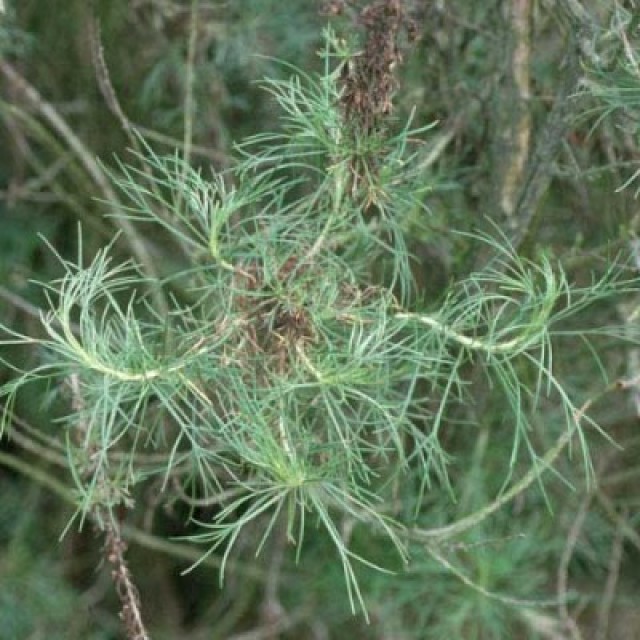COMMON NAME
California sagebrush
SCIENTIFIC NAME
Artemisia californica
Plant family
Aster (Asteraceae)
Plant group
Deciduous Trees and Shrubs
A highly fragrant, dense rounded evergreen shrub up to 1.8 m (6 ft) tall and with dense branched threadlike leaves. Heads of yellow flowers often form dense spikes at the tips of stems.
73 reports
59+
OBSERVERS
73+
OBSERVATIONS
Identification hints
Sagebrushes are mostly highly branched aromatic woody shrubs with evergreen leaves, but they can be herbs as well. California sagebrush is the only sagebrush that grows in chaparral that has woody stems and long linear thread-like leaves often with several leaflets which branch off of them (generally less than 2 cm (.78 in)) with its margins curled under. The common desert sagebrush (big sagebrush, A. tridentata) by contrast has thick wedge-shaped 3-lobed leaves and generally occurs at high elevations or in interior semi-desert habitats.
Did you know?
Well-established California sagebrush stands are important habitat for the California Gnatcatcher, which is a federally threatened bird. Oils produced or stored in the stems and leaves of California Sagebrush contain several toxic terpenes, which make them unpalatable to livestock and to most wild plant-eating mammals. These oils may also account for both its aromatic scent and the fact that the soil beneath these shrubs is usually bare of other seedlings. In fact, the moisture that condenses on and then drips from the surfaces of Sagebrush leaves following the first autumn rains are toxic. Many insects forage on its leaves, making these shrubs a rich source of nutrition for insect-eating birds and small mammals.
DISTRIBUTION IN TH U.S.
California
HABITAT
California Sagebrush is found in coastal sage scrub and chaparral communities from northern California south to Mexico, and is commonly found on coastal plains and dry foothills near the coast at elevations less than 1500 ft (450 m).
ATTRIBUTES
Leaves
The aromatic leaves are 1 to 2 in (2 to 5 cm) long and finely divided into 2 to 4 narrow leaflets. The tiny leaflets are threadlike, less than 0.03 in (1 mm) wide. With a hand lens you can see that they are slightly hairy and light grayish-green in color. The leaflet margins (edges) are curved under. Leaves appear in fall and wither in the dry season, usually the late spring and summer.
Flowers
The tiny flowers are about 0.03 in (1 mm) in diameter and clustered into yellow heads less than 0.19 in (5 mm) in diameter. Each head (inflorescence) contains 6 to 10 female flowers in the center and 15 to 30 bisexual flowers around the perimeter. As the flowers age, the head droops and flowers turn brownish. As many as 20 to 50 heads of flowers often form dense spikes at the tips of stems 12 in (30 cm) long and up to 4 in (10 cm) across.
Fruits
Each flower develops into a one-seeded fruit (an “achene”) that is surrounded by a feathery structure (pappus), which helps disperse fruits in wind.
Bloom Time
California Sagebrush generally flowers in mid-summer, however a wide variety of flowering times have been observed throughout California. In Southern California these shrubs generally flower from August to December depending on elevation and moisture.
See Menu
- 2021 Chicago Botanic Garden. All Rights Reserved.
-
Creative Commons
BY-NC-SA 4.0 - Terms of Use
- Privacy Policy
- Data Sharing and Citation Policies
- 2021 Chicago Botanic Garden. All Rights Reserved.



